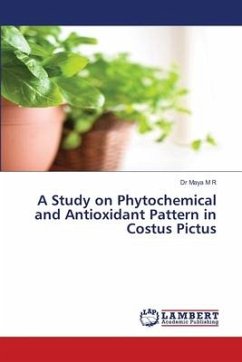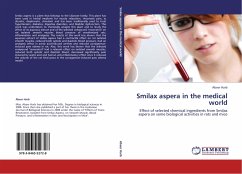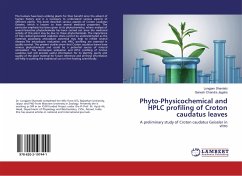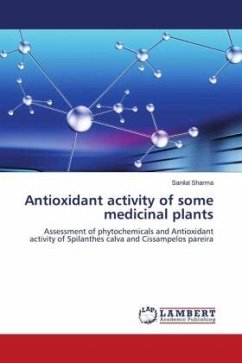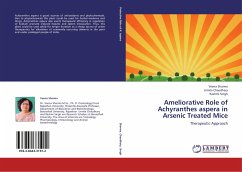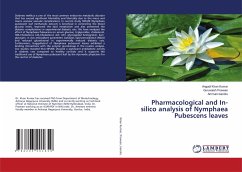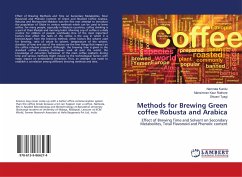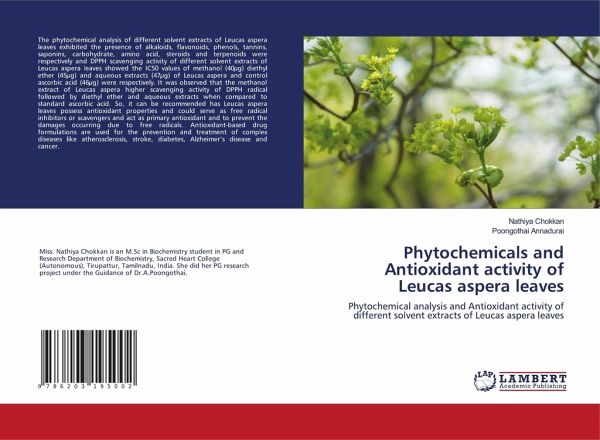
Phytochemicals and Antioxidant activity of Leucas aspera leaves
Phytochemical analysis and Antioxidant activity of different solvent extracts of Leucas aspera leaves
Versandkostenfrei!
Versandfertig in 6-10 Tagen
27,99 €
inkl. MwSt.

PAYBACK Punkte
14 °P sammeln!
The phytochemical analysis of different solvent extracts of Leucas aspera leaves exhibited the presence of alkaloids, flavonoids, phenols, tannins, saponins, carbohydrate, amino acid, steroids and terpenoids were respectively and DPPH scavenging activity of different solvent extracts of Leucas aspera leaves showed the IC50 values of methanol (40µg) diethyl ether (45µg) and aqueous extracts (47µg) of Leucas aspera and control ascorbic acid (46µg) were respectively. It was observed that the methanol extract of Leucas aspera higher scavenging activity of DPPH radical followed by diethyl ether...
The phytochemical analysis of different solvent extracts of Leucas aspera leaves exhibited the presence of alkaloids, flavonoids, phenols, tannins, saponins, carbohydrate, amino acid, steroids and terpenoids were respectively and DPPH scavenging activity of different solvent extracts of Leucas aspera leaves showed the IC50 values of methanol (40µg) diethyl ether (45µg) and aqueous extracts (47µg) of Leucas aspera and control ascorbic acid (46µg) were respectively. It was observed that the methanol extract of Leucas aspera higher scavenging activity of DPPH radical followed by diethyl ether and aqueous extracts when compared to standard ascorbic acid. So, it can be recommended has Leucas aspera leaves possess antioxidant properties and could serve as free radical inhibitors or scavengers and act as primary antioxidant and to prevent the damages occurring due to free radicals. Antioxidant-based drug formulations are used for the prevention and treatment of complex diseases like atherosclerosis, stroke, diabetes, Alzheimer's disease and cancer.



